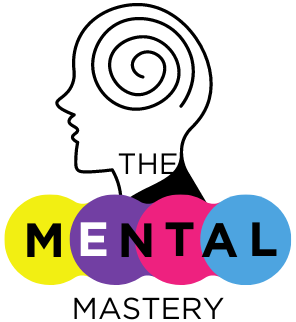Understanding Co-dependency: Signs, Causes, and Treatment Options
Introduction
Co-dependency is a psychological condition where people prioritize the wants and feelings of others over their own, frequently to the cost of their mental health. The phrase is frequently used regarding relationships. Although the idea is not new, its significant influence on interpersonal dynamics and personal well-being has led to its growing popularity. Fostering better relationships and mental wellness requires an understanding of co-dependency.
The primary warning signs of co-dependency, its root causes, and evidence-based treatment options are examined in this article, giving readers the skills they need to recognize and successfully deal with these behaviours.

Understanding the Topic
According to the DSM-5, co-dependency is a behavioural condition that can have significant effects on a person’s emotional and psychological state, but it is not officially defined as a mental health disease. It often arises in relationships marked by imbalances of power, where one person excessively depends on the other for validation, self-worth, or emotional needs (Cowan & Warren, 2019). Although co-dependency was first understood in the context of addiction rehabilitation, it has since broadened to cover a variety of relational dynamics, such as romantic, platonic, and familial relationships.
5 Signs of Co-dependency
Recognizing codependent behaviours is the first step toward change. Key signs include:
1. Difficulty Setting Boundaries
Codependent individuals often struggle to establish healthy boundaries, saying yes to others even when it compromises their own needs or well-being. This behaviour is often driven by a deep fear of rejection or conflict (Miller et al., 2016).
2. Low Self-Esteem
A common trait among codependent individuals is diminished self-worth. They derive their sense of identity and value from pleasing others, leading to chronic feelings of inadequacy or self-doubt.
3. Overwhelming Need for Control
Codependent people may exhibit controlling behaviours, attempting to manage or “fix” others’ problems to maintain their perceived sense of stability in the relationship.
4. Dependence on Validation
Codependent individuals rely heavily on external approval and struggle with feelings of anxiety or emptiness when they do not receive affirmation from others (Knudson-Martin & Huenergardt, 2019).
5. Neglect of Personal Needs
In focusing excessively on others, codependent individuals often neglect their own physical, emotional, and mental health needs, leading to burnout and chronic stress.
4 Causes of Co-dependency
The roots of co-dependency are multifaceted and often trace back to early life experiences. Key causes include:
1. Childhood Trauma
Research indicates that adverse childhood experiences (ACEs), such as neglect or abuse, can contribute to the development of codependent behaviours. Children who grow up in unpredictable or unsafe environments may learn to prioritize others’ needs as a survival mechanism (Anda et al., 2006).
2. Family Dynamics
Dysfunctional family systems, particularly those involving substance abuse or mental illness, are common breeding grounds for co-dependency. In such families, children may adopt caregiving roles prematurely, learning to suppress their needs to maintain family stability.
3. Societal and Cultural Influences
Societal norms that emphasize self-sacrifice or traditional caregiving roles can perpetuate codependent behaviours, particularly among women (Gilligan, 2015). These norms often glorify putting others first, further entrenching the pattern.
4. Attachment Styles
Insecure attachment styles, such as anxious or avoidant attachment, can increase vulnerability to co-dependency. These attachment patterns often result from inconsistent caregiving in childhood (Mikulincer & Shaver, 2016).
5 Treatment Options for Co-dependency
Overcoming co-dependency requires a combination of self-awareness, professional support, and evidence-based interventions. Effective strategies include:
1. Psychotherapy
Therapy, particularly cognitive-behavioural therapy (CBT), has shown efficacy in addressing codependent behaviours by helping individuals challenge unhelpful thought patterns and develop healthier coping mechanisms (Beck, 2020). Family or couples therapy can also be beneficial in addressing relational dynamics.
2. Mindfulness Practices
Mindfulness-based interventions can help individuals cultivate greater self-awareness and emotional regulation, reducing the impulsive need to please or control others. Studies have shown that mindfulness improves overall mental health and resilience (Gu et al., 2015).
3. Setting Boundaries
Learning to establish and maintain boundaries is crucial in breaking codependent cycles. Therapists often guide individuals in practicing assertiveness and saying no without guilt.
4. Support Groups
Groups like Codependents Anonymous (CoDA) provide a safe space for individuals to share experiences, gain insights, and receive encouragement from others facing similar challenges.
5. Self-Care Practices
Focusing on self-care can help codependent individuals reconnect with their needs and priorities. Regular exercise, balanced nutrition, and hobbies can significantly improve overall well-being.
The Role of Education and Self-Awareness
Education plays a pivotal role in combating co-dependency. People are better equipped to make intentional choices that support their beliefs and mental health objectives when they are aware of the patterns and triggers that underlie these actions. People can restore their independence and create more harmonious and satisfying relationships by developing self-awareness.
Conclusion
Although co-dependency can have significant effects on relationships and mental health, it is not unsolvable. People can escape these habits and develop stronger, more empowering relationships by identifying the symptoms, understanding their causes, and getting the help they need.
Recovery from co-dependency is not only possible but also transformative, opening the door to emotional freedom and personal development via self-care, mindfulness, and therapy. In addition to helping individuals, addressing co-dependency improves the relationships and communities in which they live.
References
Anda, R. F., et al. (2006). The enduring effects of abuse and related adverse experiences in childhood. European Archives of Psychiatry and Clinical Neuroscience, 256(3), 174–186.
Beck, J. S. (2020). Cognitive Behavior Therapy: Basics and Beyond. Guilford Publications.
Gilligan, C. (2015). In a Different Voice: Psychological Theory and Women’s Development. Harvard University Press.
Gu, J., Strauss, C., Bond, R., & Cavanagh, K. (2015). How do mindfulness-based cognitive therapy and mindfulness-based stress reduction improve mental health and wellbeing? A systematic review and meta-analysis. Clinical Psychology Review, 37, 1–12.
Knudson-Martin, C., & Huenergardt, D. (2019). The Family Therapy Treatment Planner. John Wiley & Sons.
Mikulincer, M., & Shaver, P. R. (2016). Attachment in Adulthood: Structure, Dynamics, and Change. Guilford Press.
Miller, J. D., et al. (2016). Examining the relations among narcissism, impulsivity, and self-defeating behaviors. Journal of Personality Assessment, 98(1), 45–55.







